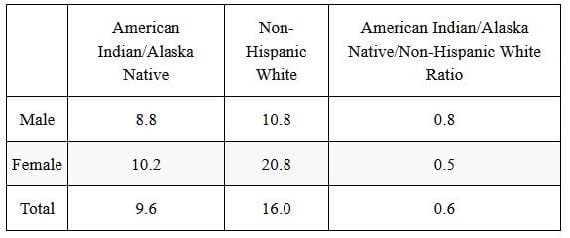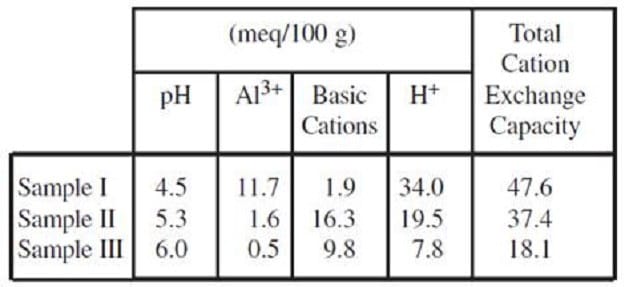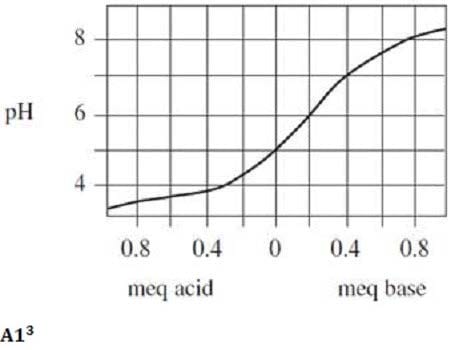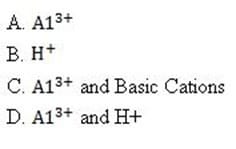
MCAT-TEST Exam Questions & Answers
Exam Code: MCAT-TEST
Exam Name: Medical College Admission Test: Verbal Reasoning, Biological Sciences, Physical Sciences, Writing Sample
Updated: Nov 16, 2024
Q&As: 812
At Passcerty.com, we pride ourselves on the comprehensive nature of our MCAT-TEST exam dumps, designed meticulously to encompass all key topics and nuances you might encounter during the real examination. Regular updates are a cornerstone of our service, ensuring that our dedicated users always have their hands on the most recent and relevant Q&A dumps. Behind every meticulously curated question and answer lies the hard work of our seasoned team of experts, who bring years of experience and knowledge into crafting these premium materials. And while we are invested in offering top-notch content, we also believe in empowering our community. As a token of our commitment to your success, we're delighted to offer a substantial portion of our resources for free practice. We invite you to make the most of the following content, and wish you every success in your endeavors.

Download Free MCAT MCAT-TEST Demo
Experience Passcerty.com exam material in PDF version.
Simply submit your e-mail address below to get started with our PDF real exam demo of your MCAT MCAT-TEST exam.
![]() Instant download
Instant download
![]() Latest update demo according to real exam
Latest update demo according to real exam
* Our demo shows only a few questions from your selected exam for evaluating purposes
Free MCAT MCAT-TEST Dumps
Practice These Free Questions and Answers to Pass the MCAT Certifications Exam
Saul Hoffman's scientific journal paper published in 2015 in Societies explores the relationship between two topics that at the surface are very distant from each other. As he goes on to state, "It is relatively easy, at least for an economist, to see why economists would be attracted to issues like teen pregnancy and teen childbearing, despite their apparent distance from the core topics of economics. First, economics ?especially microeconomics ?is fundamentally the study of choices that individuals make, traditionally and most often in formal markets with monetary prices, but now more and more frequently outside that sphere. Viewed from that perspective, choices involving sexual and fertility behavior among teens are an incredibly challenging, but inviting, target. Is it possible to identify the role of economic incentives, including government policy, on these behaviors? Is it sensible to apply traditional models of rational choice decision-making to teens?
Second, the traditional concern about teen fertility was predicated on the notion that it was an economically catastrophic act. In a famous and oft-quoted 1968 article, Arthur Campbell wrote that 'The girl who has an illegitimate child at the age of 16 suddenly has 90 percent of her life's script written for her,' including reduced opportunities for schooling, the labor market, and marriage. But it doesn't take too much reflection to appreciate that more may be going on in leading to these poor outcomes than just a teen birth. Disentangling the causal effect of teen childbearing on subsequent socio-economic outcomes from its correlational effect is another deliciously inviting and challenging target, this time well-suited for the applied economist or econometrician.
Just to make all this yet more inviting, the two research strands are closely related. Suppose it could be demonstrated that for some teens the socio-economic impact of a teen birth was negligible. For example, maybe future prospects for some teens were equally poor with or without a birth or perhaps government programs provided substantial benefits, so that the net impact on socio-economic well-being was consequently small or even positive. Then, it might well be 'rational' in an economic sense to have a teen birth in the first place, thereby linking the research on the causal impact of a teen birth with the research on the choice determinants of a teen birth. So what came to be known as the teen birth `causes' literature and the teen birth `consequences' literature were clearly interrelated.
And then, to add yet another layer of challenge, the teen fertility rate in the U.S. has fallen at a rate that is totally unprecedented. Teen fertility was once widespread, with most of it occurring within early and sometimes not entirely voluntary marriage. In 1960, the teen fertility rate was approximately 90 births per 1000, which implied that more than 40% of women ever had a teen birth. When I published my first article on teen births 25 years ago, the teen fertility rate was 60 births per 1000, down one-third from 1960, but it had increased six years in a row in what turned out to be a deviation from the downward trend. Since then the rate has declined every single year, except for a short but puzzling uptick between 2005 and 2007. In 2014, the teen fertility rate was 24.2 births per 1000, the lowest teen fertility rate ever recorded in the U.S., though still shockingly high by European standards. Thus, the rate fell by more than 50% during my professional association with the topic and by 70% since 1960. Of course, at the same time teen marital births largely disappeared, falling from 85% of teen births to 12%.
This adds yet another focus for economic research. Why did the rate fall? Did it have anything to do with changes in the costs of teen childbearing or changes in policy? Is it a good thing or not?
In this article I try to make sense out of these various research strands by providing a personal narrative through the economics literature on teen childbearing, with a special emphasis on the three issues discussed above. My goal is to make the literature, including some reasonably technical content, accessible and valuable to a non-economist."
Hoffman, S. (2015). Teen Childbearing and Economics: A Short History of a 25-Year Research Love Affair. Societies, 5(3), 646-663. doi:10.3390/soc5030646
The author's main point could be most strongly undermined by a sociological or economic study showing that:
A. statistics on teen birth make little apparent sense because even when there is an overall downward trend, the teen birth rate can unpredictably swing upward, and vice versa.
B. many teens who give birth do so not out of desire to be parents, but because they lack access to birth control and effective sex education.
C. in recent years, the economic and career results of teen pregnancy have been getting worse.
D. potential teenage mothers are minimally influenced by economic considerations like career and financial prospects, but make choices based on irrational factors like community beliefs about morality.
The amount of lactic acid in muscles rises when they start lacking:
A. carbon dioxide.
B. oxygen.
C. glucose.
D. hydrogen carbonate.
The process by which individuals decide and choose to seek assistance for health or mental health problems is called help-seeking. Table 1 displays the percentage of American Indian/Alaska Native and non-Hispanic White adults who received mental health or counseling treatment in 2008
Help-seeking is a complex process and individuals will choose to obtain treatment for a variety of reasons. One of the strongest individual-related help-seeking predictors amounts to perceiving the need to do so. Other individual-related factors are the educational and the socioeconomic status. There may also be systematic factors that prevent people from doing so, such as general mistrust of health, mental health, and social service institutions, particularly among racial and ethnic minorities. It has been speculated that some of the mistrust stems from research studies, sponsored by medical establishments, where racial and ethnic minorities express concerns of being recruited for the purpose of serving as guinea pigs. Focus groups with African Americans and Chinese immigrants confirmed this anxiety and fear.
Thus, cultural factors also play a role in the help-seeking process. Western cultural norms about medicine are premised on norms of individualism. However, individuals from other cultures and racial and ethnic minority groups tend to be both more collectivistic and fatalist. Disease, both medical and mental, is believed to occur because of fate. It is not something where one should spend much time and effort fighting; the needs of the family and even of the extended family are to come first.
Table 1 Access to health care: Percentage of adults who received mental health treatment or counseling in the past year, 2008

Source: Adapted from U.S. Department of Health and Human Services,"Mental Health and American Indians/ Alaska Natives"
What would the main focus of supporters of a medicalized approach to mental health be?
A. They would disregard mental health as a myth, and mainly inquire about and treat clients' physical symptoms through the use of prescription drugs.
B. They would mainly focus on establishing a strong, healthy relationship with clients, and attempt to build up their psychological strengths.
C. They would insist that mental illness should be viewed in a holistic manner and employ complementary alternative medicines as a first avenue of intervention.
D. Just like with any other physical disease, they would inquire about existing symptoms, formulate a diagnosis, and attempt to treat or cure the diagnosed disease.
The periodic beating of the heart is controlled by electrical impulses that originate within the cardiac muscle itself. These pulses travel to the sinoatrial node and from there to the atria and the ventricles, causing the cardiac muscles to contract. If a current of a few hundred milliamperes passes through the heart, it will interfere with this natural system, and may cause the heart to beat erratically. This condition is known as ventricular fibrillation, and is life-threatening. If, however, a larger current of about 5 to 6 amps is passed through the heart, a sustained ventricular contraction will occur. The cardiac muscle cannot relax, and the heart stops beating. If at this point the muscle is allowed to relax, a regular heartbeat will usually resume.
The large current required to stop the heart is supplied by a device known as a defibrillator. A schematic diagram of a defibrillator is shown below. This device is essentially a "heavy-duty" capacitor capable of storing large amounts of energy. To charge the capacitor quickly (in 1 to 3 seconds), a large DC voltage must be applied to the plates of the capacitor. This is achieved using a step-up transformer, which creates an output voltage that is much larger than the input voltage. The transformer used in this defibrillator has a step-up ratio of 1:50.

The AC voltage that is obtained from the transformer must then be converted to DC voltage in order to charge the capacitor. This is accomplished using a diode, which allows current flow in one direction only. Once the capacitor is fully charged, the charge remains stored until the switch is moved to position B and the plates are placed on the patient's chest. To cut down the resistance between the patient's body and the defibrillator, the electrodes are covered with a wetting gel before use. Care must be taken to insure that the patient is not in electrical contact with the ground while the defibrillator is in use.
Why is it important to insure that the patient is not in electrical contact with the ground while the defibrillator is in use?
A. Contact with the ground will decrease the resistance across the patient's body.
B. The doctor administering the treatment will be in greater danger of receiving an electric shock if the patient is in electrical contact with the ground.
C. Contact with the ground will cause a smaller current to pass through the patient's heart.
D. The patient receiving the treatment will be in greater danger of receiving burns due to the high current density if he is in electrical contact with the ground.
Many nutrients required by plants exist in soil as basic cations:

A soil's cation-exchange capacity is a measure of its ability to adsorb these basic cations as well as exchangeable hydrogen and aluminum ions. The cation-exchange capacity of soil is derived from two sources: small clay particles called micelles consisting of alternating layers of alumina and silica crystals, and organic colloids.

Replacement of + and + by other cations of lower valence creates a net negative charge within the inner layers of the micelles. This is called the soil's permanent charge. For example, replacement of an atom of aluminum by calcium within a section where the net charge was previously zero, as shown below, produces a net charge of ?, to which other cations can become adsorbed.

Figure 1
A pH-dependent charge develops when hydrogen dissociates from hydroxyl moieties on the outer surfaces of the clay micelles. This leaves negatively-charged oxygen atoms to which basic cations may adsorb. Likewise, a large pH-
dependent charge develops when hydrogen dissociates from carboxylic acids and phenols in organic matter.
In most clays, permanent charges brought about by substitution account for anywhere from half to nearly all of the total cation-exchange capacity. Soils very high in organic matter contain primarily pH-dependent charges. In a research study,
three samples of soil were leached with a 1 N solution of neutral KCl, and the displaced A13+ and basic cations measured. The sample was then leached again with a buffered solution of BaCl2 and triethanolamine at pH 8.2, and the
displaced H+ measured. Table 1 gives results for three soils tested by this method.
Table 1

Due to the buffering effect of the soil's cationexchange capacity, just measuring the soil solution's pH will not indicate how much base is needed to change the soil pH. In another experiment, measured amounts of acid and base were added to 10-gram samples of well-mixed soil that had been collected from various locations in a field. The volumes of the samples were equalized by adding water. The results were recorded in Figure 2.
Figure 2.

Which of the following would probably NOT displace + in soil micelles?

A. Option A
B. Option B
C. Option C
D. Option D
Viewing Page 1 of 3 pages. Download PDF or Software version with 812 questions

